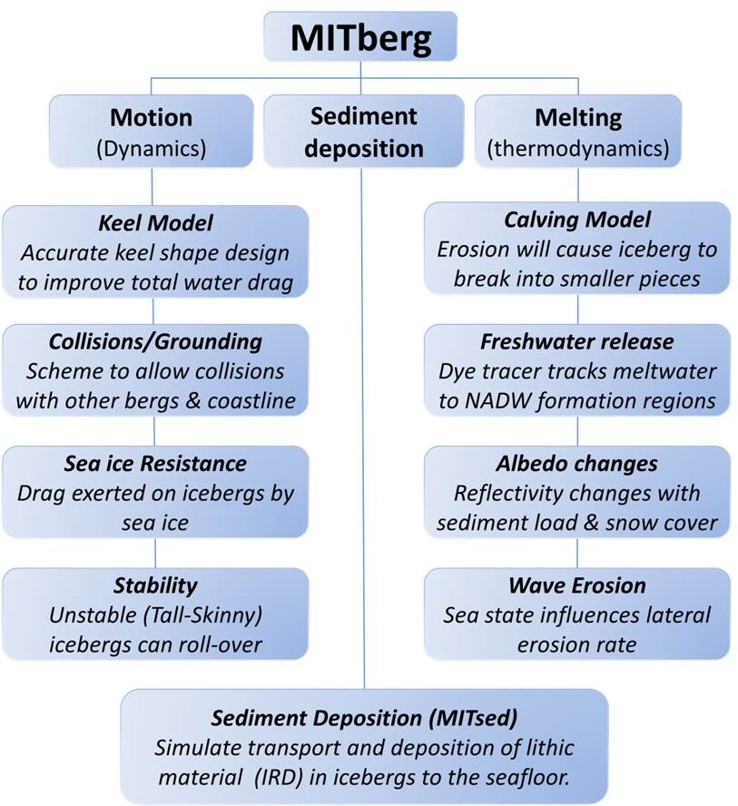Every year tens-of-thousands of icebergs calve from the Greenland Ice Sheet. They often drift thousands of kilometers before finally melting, and deliver freshwater to the ocean along this pathway.
In the past, the release of huge numbers of icebergs from Hudson Bay during so called, Heinrich Events, is thought to have freshened the North Atlantic enough to suppress North Atlantic Deepwater (NADW) formation. This reduction in deepwater is thought to have weakened the global thermohaline circulation, or Meridional Overturning Circulation (MOC), and caused an abrupt climate cooling as the transport of heat towards the pole diminished.
Understanding how freshwater from melting icebergs disrupts the climate system is of vital importance for understanding the stability of our modern-day climate.
MITberg is a state-of-the-art iceberg model simulating the melting and drifting of icebergs in the North Atlantic and Southern Ocean.
The model uses the latest developments in iceberg forecasting technology, including a multi-level drag scheme, keel model, and fracture parameterization, to improve iceberg trajectories and melt rates.
|

Above: The main components of MITberg used to simulate the drift of icebergs. |
This research is funded by the U.S. Department of Energy, Biological and Environmental Research (BER) division.

